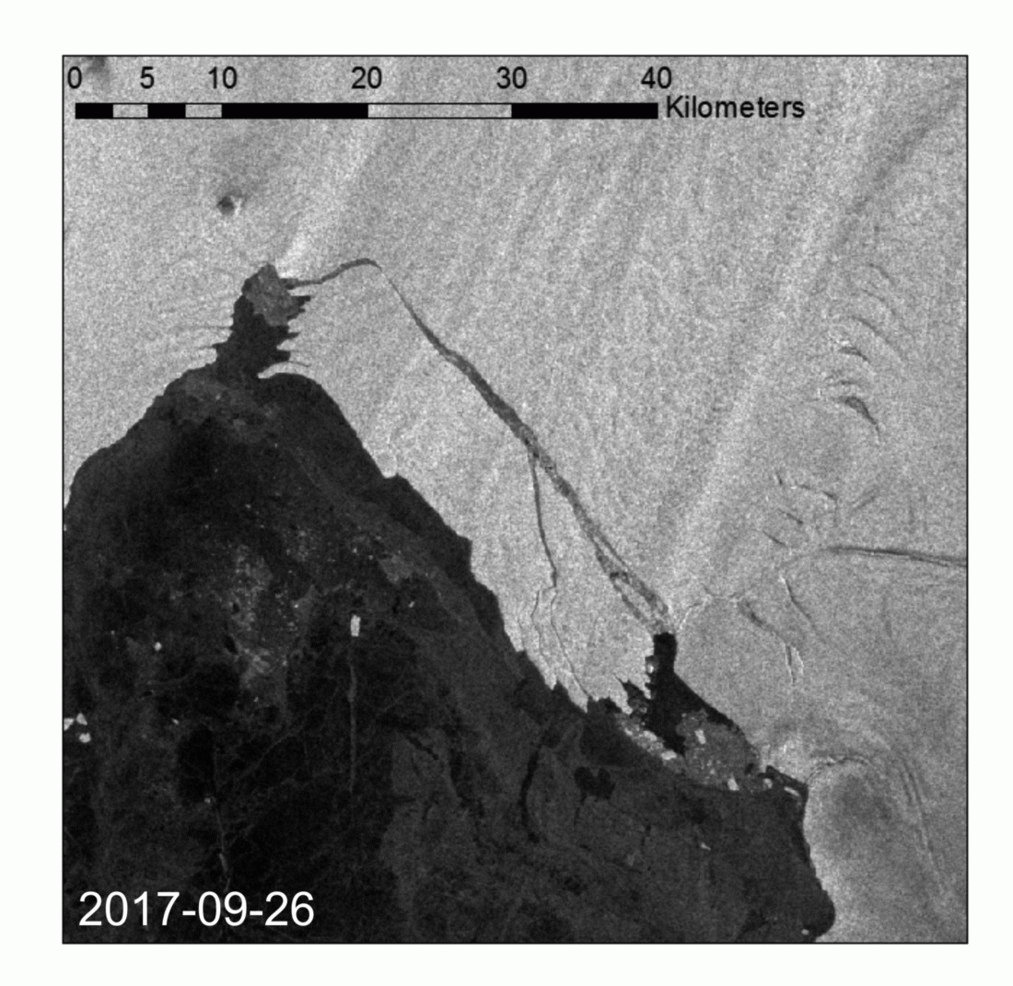Giant Antarctic iceberg the size of Manhattan just completely disintegrated, 'worrying' experts
The massive iceberg broke off from the Pine Island Glacier in September.
A giant Antarctic iceberg, the size of Manhattan, which broke off from the Pine Island Glacier (PIG) just two months ago, has completely disintegrated, sparking concerns among experts.
The PIG is widely considered to be one of the most rapidly melting Antarctic glaciers and the disintegration of this iceberg is raising concerns about the west Antarctic glacier likely becoming an even greater contributor to rising sea levels.
The 100-square-mile iceberg was already considered to be unstable when it broke off the PIG in September. It was estimated by experts to be the fifth largest calving event since 2000.
Scientists expected the iceberg to drift off farther into the Southern Ocean, but its approach toward the ocean was blocked by thick sea ice before it disintegrated into smaller icebergs.
"What we're witnessing on Pine Island Glacier is worrying. We're now seeing changes in the calving behaviour of the ice shelf, when for 68 years we saw a pattern of advance and retreat resulting in the calving of a single large iceberg which left the ice front to approximately the same place," Dr Robert Larter, a marine geophysicist at British Antarctic Survey said, in a statement.
"The calving of icebergs in 2001, 2007 and 2013 are well-documented. Each calving event returned the ice front to more or less the same position and the ice shelf flowed into the sea again. But with continuing thinning it was clear that sooner or later there would have to be a change to this pattern – and this is what we are witnessing now," Dr Larter added.
Pine Island Glacier: the movie. From Oct 2014 to recent calving in 108 #sentinel1 images @CopernicusEU @ESA_EO pic.twitter.com/oYKvelCKPd
— Stef Lhermitte (@StefLhermitte) October 13, 2017
Iceberg B-44 near Pine Island Glacier disintegrating into smaller pieces as seen by #sentinel1 @CopernicusEU @ESA_EO pic.twitter.com/gBP3M1Lhen
— Stef Lhermitte (@StefLhermitte) October 18, 2017
The PIG is the fastest melting glacier in Antarctica and is responsible for the loss of nearly a quarter land ice from the frozen continent — around 45 billion tons of ice lost each year. The massive calving event in September was important because it was the first time since 1947 that experts observed a "systematic retreat" of the ice front.
Giant West Antarctic iceberg disintegrates! Read more: https://t.co/MhS2G3JXEb #Antarctica pic.twitter.com/Q04y7uhIFf
— Antarctic Survey (@BAS_News) November 30, 2017
"If the ice shelf continues to thin and the ice front continues to retreat, its buttressing effect on PIG will diminish, which is likely to lead to further dynamic thinning and retreat of the glacier," Dr Larter said. "PIG already makes the largest contribution to sea-level rise of any single Antarctic glacier and the fact that its bed increases in depth upstream for more than 200 km means there is the possibility of runway retreat that would result in an even bigger contribution to sea level."























